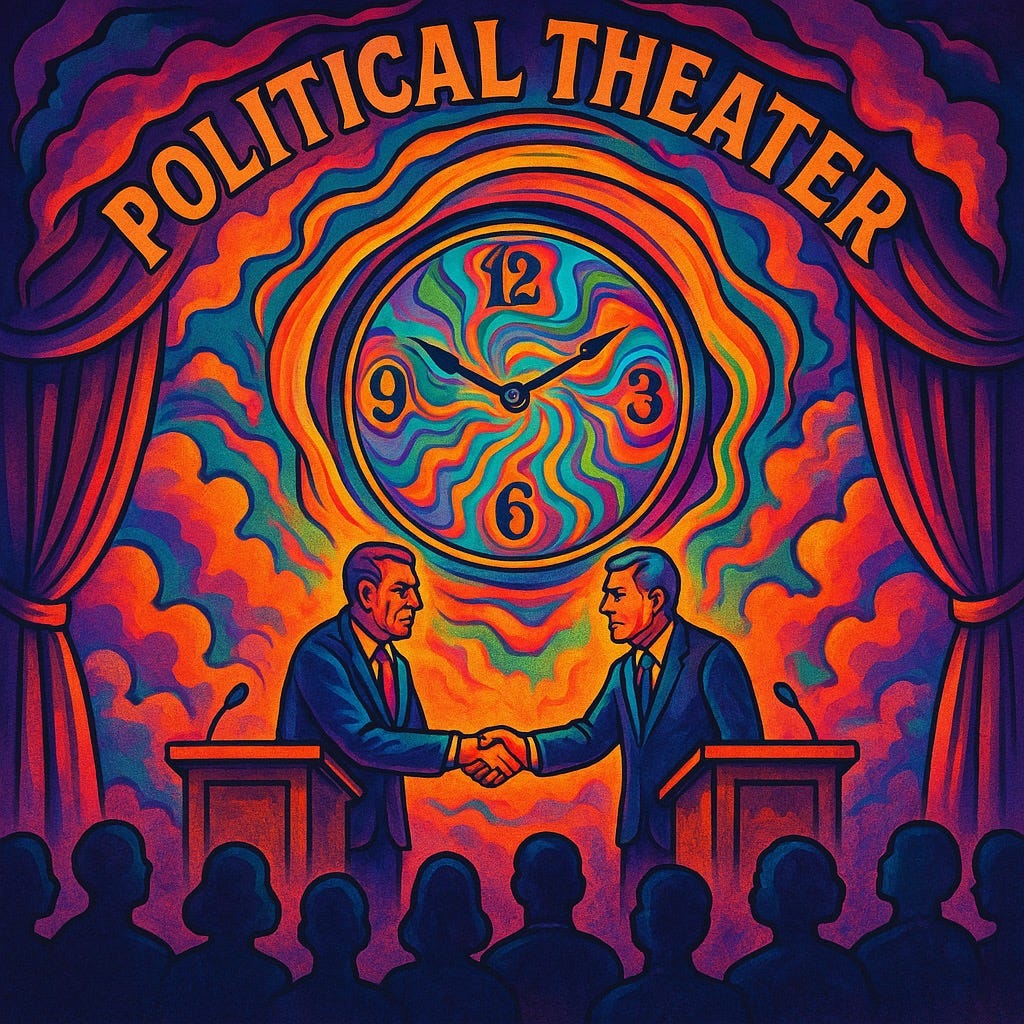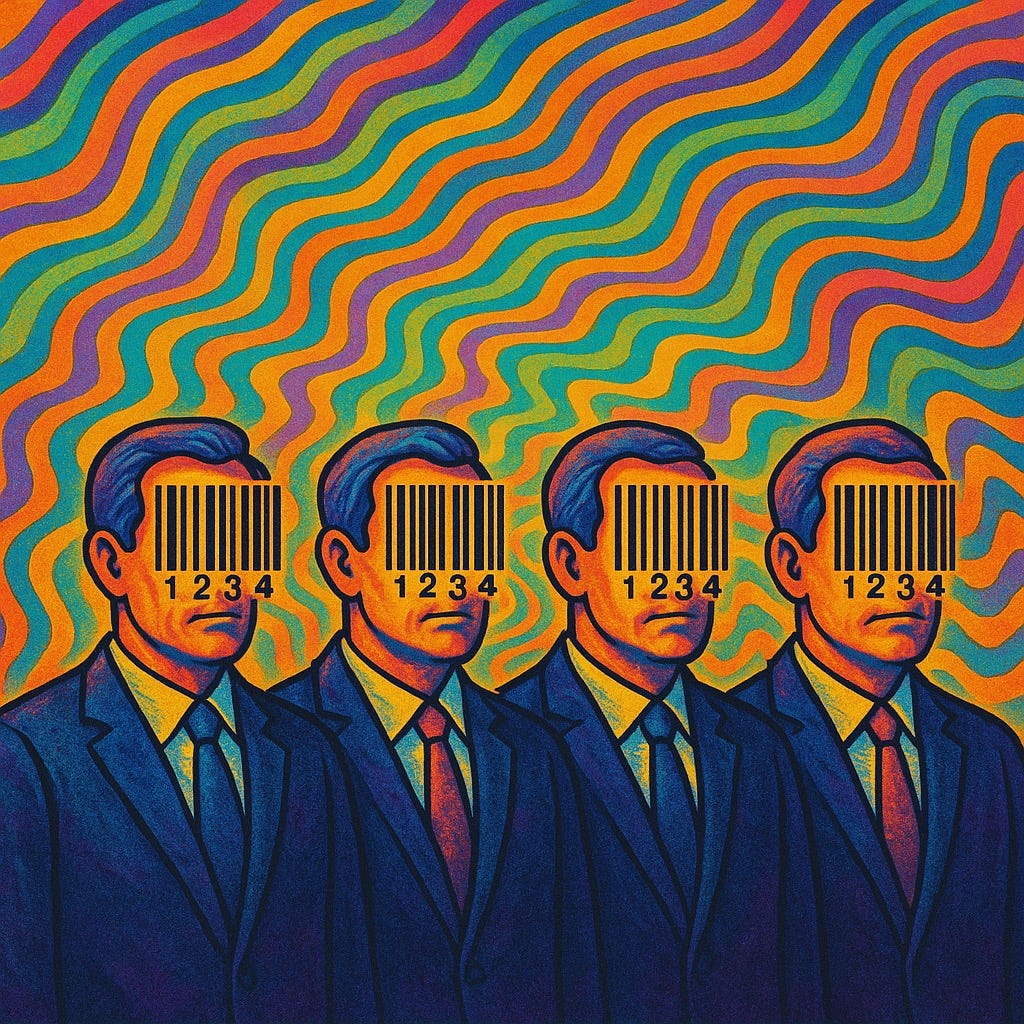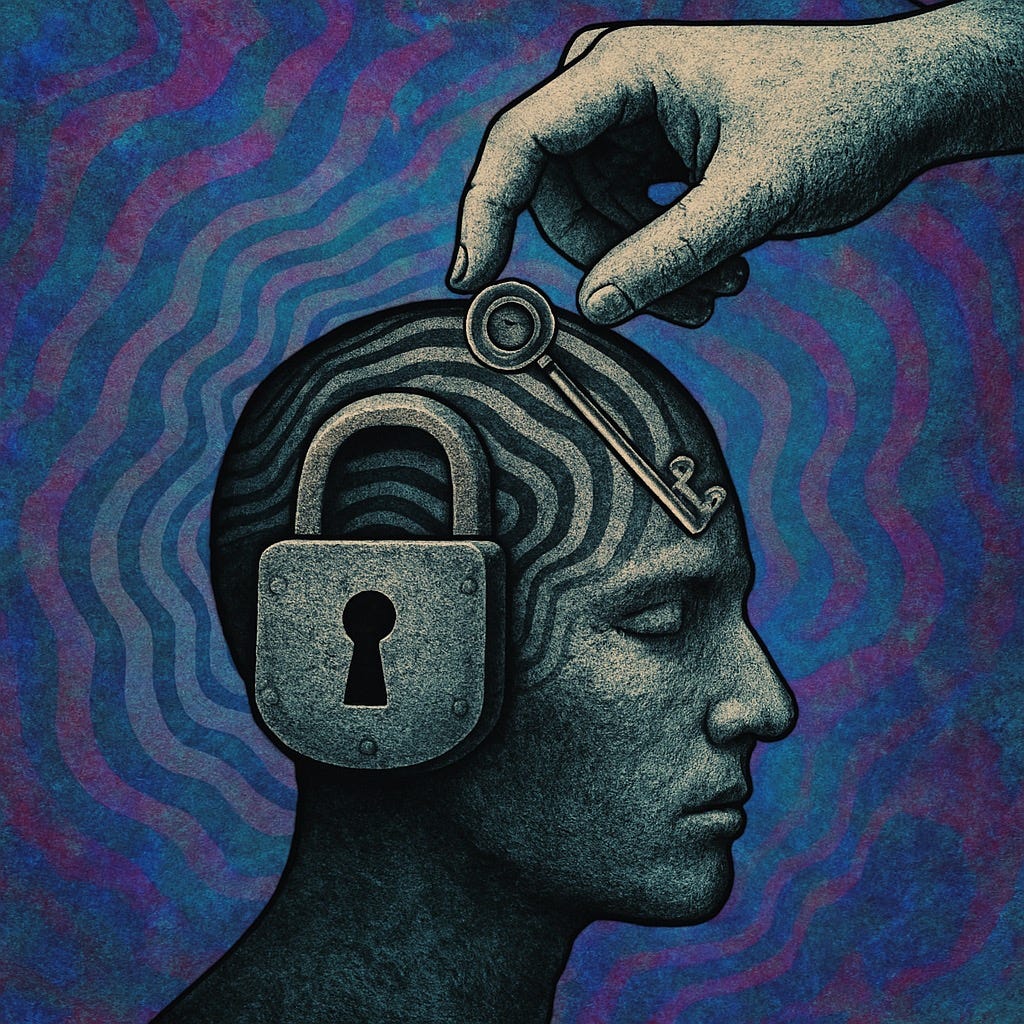Americans, on average, live in four year increments. The rhythm of their lives is dictated not by personal growth, meaningful achievement, or deep understanding, but by the shallow pulse of political theater. Every four years, like clockwork, a new president is elected, the curtains lift, and the populace is given a fresh protagonist or antagonist to project their hopes and fears onto. Presidents have become little more than characters in a series. The public consumes politics, not as serious engagement with power, but as episodic entertainment, much like their favorite television shows.
The problem, however, is that unlike a television series, the stakes here are real, and the damage cumulative. Yet, due to the meticulously engineered short attention span of the American public, each episode is treated as if it exists in isolation. Each new administration is framed as either the salvation or the downfall of the nation, and yet, after decades, the trajectory is unmistakably the same.
It is no coincidence that elections, school systems, debt cycles, military campaigns, and even corporate business cycles follow the same four year or quadrennial pattern. They have been structured to mirror the attention span of a population conditioned to forget. Every four years, the populace is given just enough newness, a new face, a new scandal, a new slogan to reset the conversation and prevent memory from threatening the legitimacy of the system itself.
Those who vote are not participating in governance, but rather consuming a brand. Every administration, left or right, is advertised as the most decisive, the most dangerous, the most consequential, only for the next to be heralded the same way. Americans, by design, are conditioned to believe that the worst began only recently. The Bush years were ‘the worst’ until Obama came along. Then Obama was ‘the worst’ until Trump. Then, Biden bore the same cross. Meanwhile, every administration preserves the legacy of its predecessor’s worst offenses while adding its own signature abuses, whether covertly or overtly.
One of the most chilling examples, almost entirely forgotten, was the infamous snitch line during the Obama years. Under the guise of combating ‘misinformation’ about the Affordable Care Act, the federal government encouraged Americans to report each other, even their own family members, for voicing dissent. Public schools and community programs urged children to report their parents if they spoke unfavorably about the Individual Mandate or the ACA. This wasn’t ancient history. This wasn’t a product of Cold War paranoia. It was less than two decades ago, under a president still widely revered.
The idea that one could not even freely discuss politics or policy within the confines of their own home without fear of being reported (by their own child, no less) sounds like the kind of dystopian scenario Americans smugly attribute to totalitarian regimes abroad. Yet it happened right here. The outrage, if there was any, lasted less than a cycle. Today, most have forgotten it happened at all. Many will deny it if confronted. It has been successfully memory holed.
And yet, those paying attention recognize the pattern. Obama’s snitch line was not unique. Bush’s mass warrantless surveillance under the Patriot Act was absorbed into normalcy, then expanded. Clinton’s draconian crime bill, which devastated communities across the country, has been laundered into historical footnotes. Reagan’s ‘War on Drugs’ still echoes in every overpoliced neighborhood. Each administration builds upon the authority, infrastructure, and precedents of the previous, creating a seamless continuation of infringements justified by law, necessity, or emergency.
The four year cycle does not allow the average person to reflect long enough to recognize this continuity. Instead, the focus is always the current president. This encourages not only forgetfulness but also the comforting illusion that if only we elect the ‘right’ person next time, everything will be set right. This cycle is the political equivalent of learned helplessness, and it thrives on short attention spans.
The system itself quietly relies on this. Americans are conditioned not to engage history but to consume it as a series of disconnected moments. There is no context. There is no memory. This is why an administration can implement policies one year that would have sparked revolt the year before, but once framed in the ‘current crisis,’ will be accepted or even applauded. The population is always looking at this president, this law, this scandal, this outrage, and rarely asking how it fits into the larger pattern.
From an anarchist perspective, this is not accidental, nor is it merely unfortunate. It is inherent to a system that does not actually function for the individual, but rather exists to manage and direct individuals in service to institutional power. The average American, conditioned to live in political amnesia becomes, not a participant in governance, but a passive consumer of narratives carefully managed to obscure the nature of power itself.
So, the charade continues. Each administration inherits and expands the tools of the last. Each new president is either feared as the next dictator or heralded as the next savior. Each scandal is treated as if it is brand new. Yet, some of us remember. Some of us carry the knowledge of continuity, knowing fully well that the problem is not, and has never been, about who holds office.
It is about how easily most people forget.








